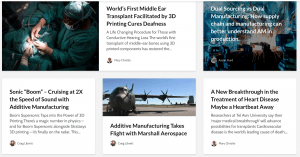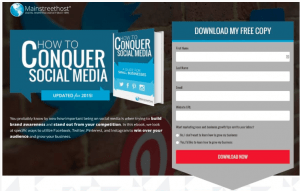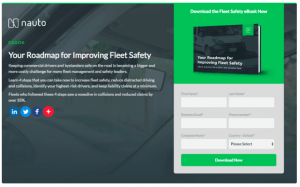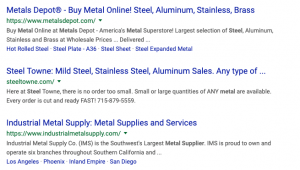
Explaining 2019 Manufacturing Website Trends
Stop and think for a second about how different your mobile device is today from 5 years ago.
It’s a completely different machine, right?
The physical shape has changed. The reason we use cell phones has changed and what we expect from a mobile experience is different than 5 years ago.
Sure our devices have changed, but the internet experience overall has changed even more.
Marketers are getting more savvy, finding ways to spend less to get more traffic while making sure that website visitors convert into followers and buyers.
Manufacturing Website Design
Manufacturing websites used to be a place to showcase your work and make your contact information available.
It was important for your website to look impressive and communicate the value that you provided.
From there, you would cross your fingers and hope that website visitors would email you for a quote or to request spec sheets.
But it used to end there.
Now digital marketing mechanisms like SEO, pay-per-click, and retargeting are making online traffic more competitive before than ever before.
To understand digital marketing trends for manufacturers, you need to understand how website trends have changed.
Websites are the home base for every digital marketing strategy so we’ll look at current manufacturing website trends.
#1: Websites Are Content Forward
Content is no longer king. Content is King, President, AND Chief-Marketing-Strategist.
Many companies incorrectly equate content marketing with blogging. A blog is one component of content marketing but it shouldn’t end there.
Here are the pillars of the 2019 content marketing strategy.
Blogs
There are now over 1 billion blogs in the world. Everyone is blogging but that isn’t making it any less important.
81% of B2B companies use blogging as a content marketing tactic and 43% say it is their most important type of content (Hubspot 2019 Marketing Statistics).
Because of the saturation of blogs, it is no longer sufficient to be blogging regularly.
Search engines are extremely sophisticated and are looking for content that is of extremely high value to searchers.
The average length for a #1 ranking blog post in 2019 is 1,705 words!
Blogging for the sake of blogging is rarely effective. In 2019, blogs need to dig deep using statistics, case studies, graphics, and videos to outrank competitors and steal organic traffic.
Video Marketing
Video continues to make big leaps in marketing utilization. And for good reason. Consider that including a video in a post increases organic traffic from search results by 157% (Search Engine People, 2017, via Hubspot)
Equally impressive is that when content contains text and video, 20% of people will read the text on the page while 80% will watch the video. (My SMN, 2017, via Hubspot).
Manufacturers who ignore video production are missing out on organic traffic, and have lower conversion rates than those who use video on landing pages.
Podcasts
Podcasts are a smart way for industries to create a community around their brand and get customers and potential customers to spend time interacting with their brand.
In 2018, 17% of marketers said they planned to add podcasting to their marketing efforts over the next 12 months.
With the massive exponential increase in blogs, marketers have been adopting new content sources, and podcast use and creation continues to grow.
Graphics
Whether it’s for research, shopping or leisure, internet users browse websites at an extremely rapid rate.
When skimming, graphics give an indicator of what the web page is about and can catch interest before the actual text is read.
From stock imagery and charts to casual photo shoots with a cell phone camera, using imagery all over a website can capture attention and provide value to users.
#2: Website UX Is Designed To Capture Leads
Web design it not not what it looks like, it’s how it works.
A beautiful (and expensive) web site that doesn’t turn visitors into leads is not a strong website.
When high converting web pages are designed, every ounce of the user experience is planned around how to help them move deeper into their journey and become leads.
NOTE: We wrote a guide with step by step instructions on how to double your leads in 30 days and it’s free for anyone to take. It’s the exact process we use to 2x, 3x, or more, our clients’ leads.
Newsletter Signups
An easy place to start is adding newsletter signups to a website.
Sign-ups can be located in the head, the footer, or in popups that display after a certain amount of time or certain user behavior.
If your website is providing high value to visitors, they’ll be happy to opt in to your newsletter which means your website should give them many opportunities to do so.
Funnel to Lead Generating Content
After reading one of your blog posts that offers value, you have to provide a path for your website visitors to take the next step.
They perceive your expertise, they’ve engaged with your brand, the next step is to give them the opportunity to engage with lead generating content.
It could be a free guide, a cheat sheet, or whitepaper that they get in exchange for their email address. See the example below:
And here’s another example:
You get a new website lead and they get valuable content that helps them work smarter.
In-Video Lead Capture
Video software like Wistia and Vimeo offer in-video lead capture.
It works similar to a traditional lead magnet but shows a portion of a video then asks for an email address in order to continue viewing.
This type of lead capture is newer than traditional lead magnets and can be an effective way to convert visitors into leads.
#3: Optimized for Search
There are 2 ways to generate traffic: Pay for it or earn it organically.
The cheapest and highest impact traffic source is organic
On a SERP (that’s Search Engine Results Page for those new to SEO), for example, organic results are 8.5 times more likely to be clicked than a paid search result.
When building your on-page SEO plan, consider these areas:
Link Toward Pillar Content
Google is looking for you to tell it which pages are important by how you structure your page.
Pillar content is something that is foundational to your website and provides substantial value.
These are usually longer articles. They are rich with details, examples, and tips that provide an authoritative perspective on your topic.
Structure your site so that pillar content has links pointing toward it from several places around your manufacturing website including your main navigation.
This tells Google that it is one of the core areas of your site and you are “strengthening” it’s SEO value.
Keyword Rich Titles & Meta Information
This the backbone of on-site SEO.
Before anything else, Google will look for your keywords in meta titles, H1 & H2 tags, image alt text and body copy.
It’s important you do your keyword research before dumping keywords everywhere. Prioritize high value keywords and place them in strategic places around your web page.
High Value Website for High Converting Visitors
Web prospects visit a lot of companies’ pages before making a decision.
Traffic acquisition is competitive which means that manufacturing websites need to be designed to not only look great, but be an aggressive component in the sales process.
In the end, strategies come and go. They get discovered, then become successful, then everyone adopts them, and their usefulness diminishes.
These are the foundation cornerstones of high converting manufacturing websites.
Choose the strategies that align with your company’s strengths and values. Find examples of other industries using them successfully and make them your own.







Tell us what you think
Share your thoughts here in the comments! Have a burning question or feedback about the topic? Let’s keep the conversation going.